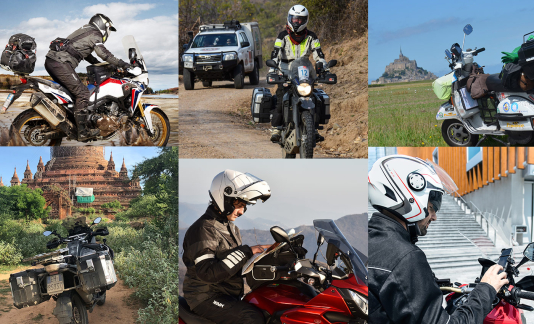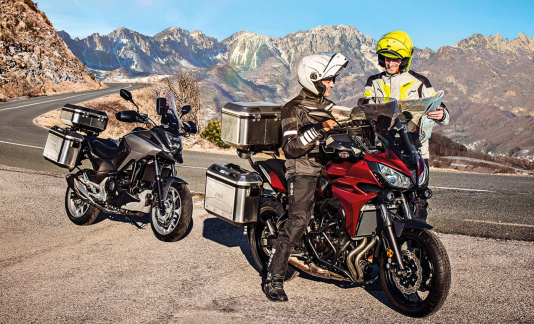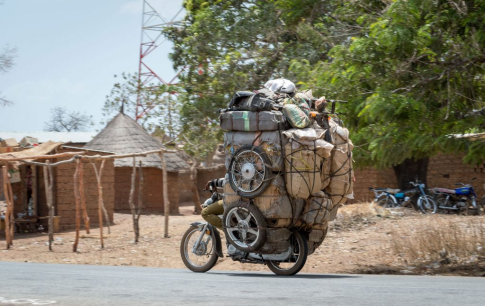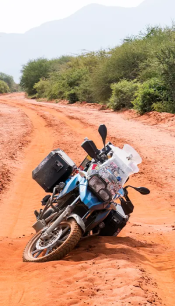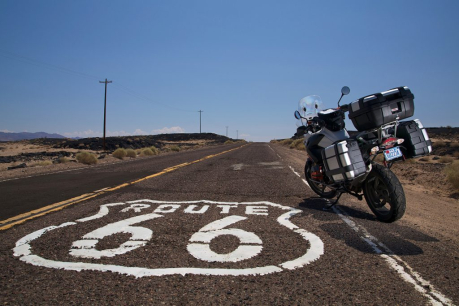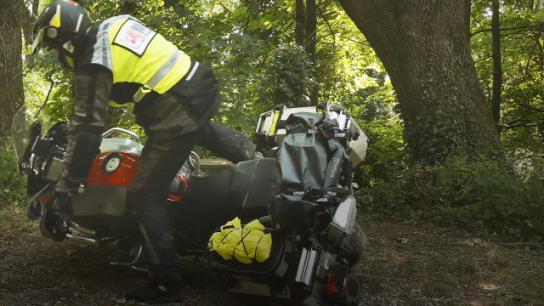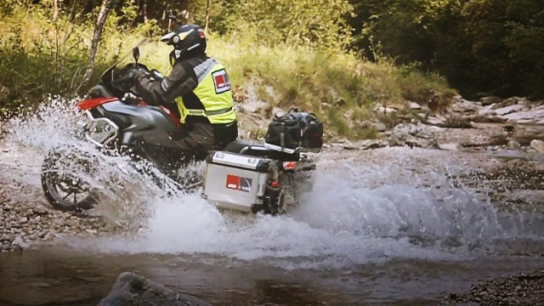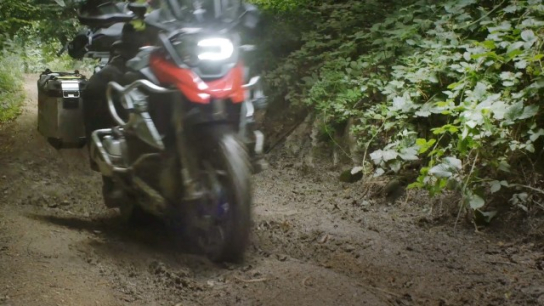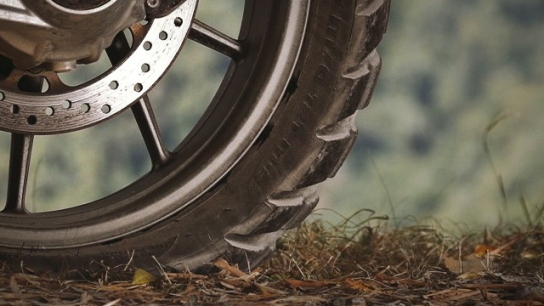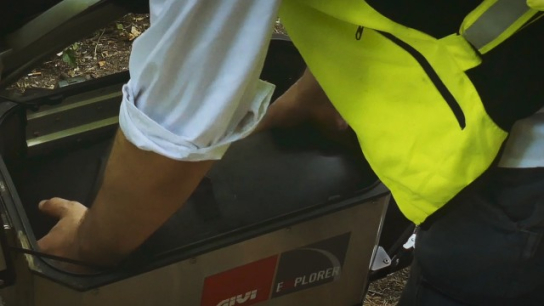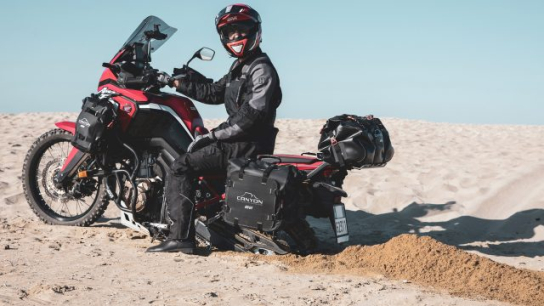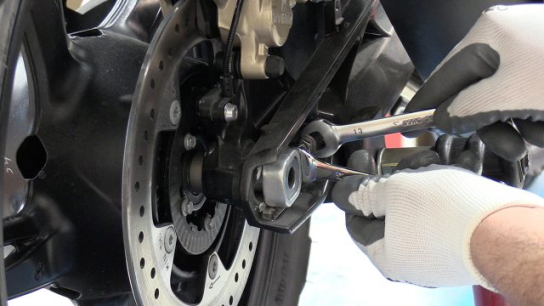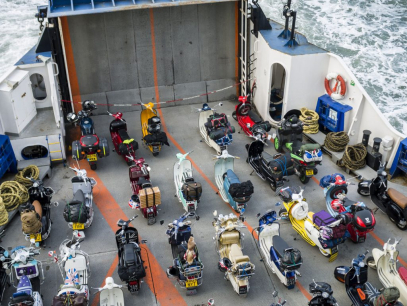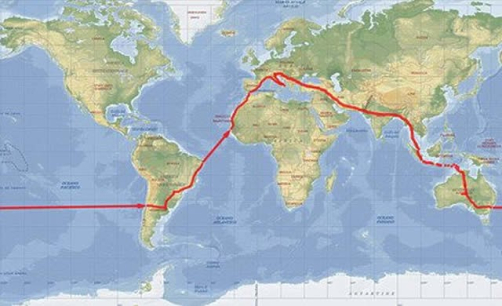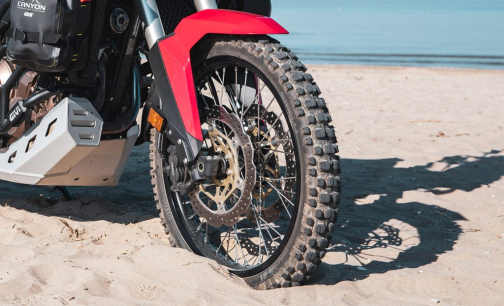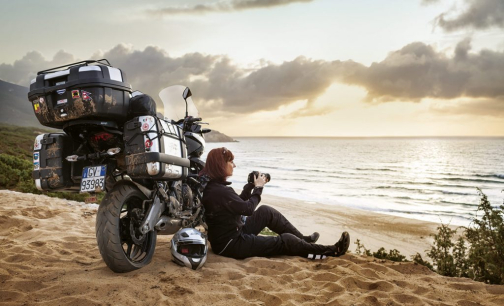Navigating on two wheels… with the itinerary at your fingertips
Smartphone or GPS, where are they fixed on motorcycle?
Do you remember when only paper maps were used for travelling?
And to call home, on the other side of the world, you had to go to a post office? Those days are long gone.
Today, small technological devices such as the smartphone or GPS are used to communicate and navigate. These devices have become indispensable for those who explore the world by motorcycle too. Yes but … where and how are they fixed on board?
You really can do everything with a smartphone: communicate, take photos, share things, find your bearings …
This is why many travellers choose to rely completely on this kind of mobile device when taking a trip.
However, there are some routes that require an extra guarantee, namely, the features offered by classic GPS navigators, some provided in versions dedicated to motorcyclists, like receiving satellite signals even in the most remote places, without the support of a network connection. Not to mention the possibility of inserting previously prepared routes on files, such as GPX, which can be read by this type of device.
And to make sure that they are ready for anything, the most “experienced” travellers tend to have a Plan B, which often takes the form of (old, expensive) printed maps that still find a special place in many of the tank bags currently in production.
Smartphones and GPS: how can they be properly secured to the bike?
The market offers plenty of solutions, but it would be impossible not to indicate GIVI as the reference company, given its great commitment to researching holders, types of mountings, materials, shapes… to successfully diversify what is on offer. Let’s have a look at the current range.
Device holder equipped with “case” and mounting system
Models that allow for the insertion of a smartphone or GPS navigator inside a case, equipped with a sun visor and a transparent touch-sensitive window, to allow access and use of the device’s screen. This category includes 6 different products divided into two lines:
S952B, S953B, S954B, developed horizontally, are designed to accommodate the classic navigator.
S955B, S956B, S957B, developed vertically, are designed for smartphones.
This “family” interfaces with the “Mini-Tanklock” mounting system, which makes it possible not only to unhook the case with a finger but also to install it on supports with irregular sections, for example, those of the mirror rods on some scooters. The rainproof cover supplied adds an extra guarantee for the safety of the device, although it is not 100% waterproof it still offers plenty of protection from light rain and on short journeys.
Smart clip s920m/l
The SMART CLIP is designed to accommodate almost all the smartphones on the market and can be adjusted both vertically and horizontally. This solution was designed by GIVI to allow those who use it to take photos or film their route (even in selfie mode): in fact, the lenses, both front and rear, are unobstructed. Furthermore, direct access to the screen eliminates any issues related to capacitive keys, fingerprint unlocking or facial or iris recognition.
The clamp is available in two sizes, S920M (for devices from 112 x 52 mm to 148 x 75 mm) and S920L (up to 178 x 90 mm). Although the tests carried out to measure the safety of this support have reached extreme levels, for the most cautious traveller we should point out that an elastic, the “a 8”, is provided to further secure the device. What if it rains? Just get one of the new GIVI T519M and T519L watertight cases.
The fitting that allows the clip to be fixed to the motorcycle is the same Mini-Tanklock shared by the models mentioned above.
What the mini-tanklock looks like
The fitting is made up of an arm, divided into two parts, equipped with adjustment screws with a run-stop, this fitting system can be applied to most of the motorcycles in circulation including exceptional cases (such as mirrors placed directly on the fairing or cast half-handlebars) thanks to the Z279 accessory.
What is more, there is a safety strap if the device holder case (here we refer to the family with which we began the article) is not properly attached.
Smart bar s900a
Those who need to keep their eye on several devices can opt for this aluminum bar, which creates a support for positioning smartphones, Telepass holders, GPSs or even action cams …).
The new aluminum supports
These are called S901A, S902A and S903A. Functional and carefully designed, these models “fit like a glove” on those bikes that deserve special attention from an aesthetic point of view or that, for one reason or another, have some peculiarities that would not allow the device to be fixed in “standard” positions.
The S901A Smart Mount support uses the screw holes that fix the risers, creating a base on which to place a device holder at the centre of the handlebar (assembly requires a specific screw kit based on the type of bike owned).
The S902A, on the other hand, is designed to be paired with the crossbars that some “Adventure” enduros have behind the standard fairing.
The last model in this series, the S903A Smart Mount, uses the brake fluid reservoir cover located in the handlebar area (again, with the appropriate screw kit).
What about motorcycle garmin and tom tom navigators?
For those who own a motorcycle navigator made by these two brands, GIVI offers specific adapters that allow you to mount them on the three aluminum supports mentioned above, using the original attachment system.
GPS vs paper map
As we mentioned earlier, there are still those who prefer not to sacrifice the traditional map to find their way while travelling.
Why rely on such “old school” help when you can have advanced technologies at your fingertips? There are pros and cons for each of these two means of navigation, let’s analyse them.
The GPS signal now covers almost the entire planet, it is reliable and convenient for various reasons. Above all, thanks to the fact that you never have to stop along the way to check which direction to take. Devices equipped with GPS signals always indicate the exact time and now guarantee an accuracy of about 10/20 meters from the actual position.
It is also possible, including with the popular Google Maps (or other APPS), to download maps onto the smartphone to use the navigator in offline mode too.
However, as sophisticated as the new devices are, there is always something that can go wrong (breakdown, power failure, theft …) and it is on these occasions that a paper map can come in handy.
Economical, they don’t run out of power and don’t lose the signal; there is little risk of them being stolen either. When technology refuses to cooperate, it is always useful for a motorcyle traveller to have a couple of maps with them, which do a great job at helping to find the way.
And finally: just think of the sense of “adventure” they bring to the trip! They represent an iconography that make them objects to be treasured once the journey is over.


